I'm a Dietitian and These Are 6 Snacks I Eat Daily
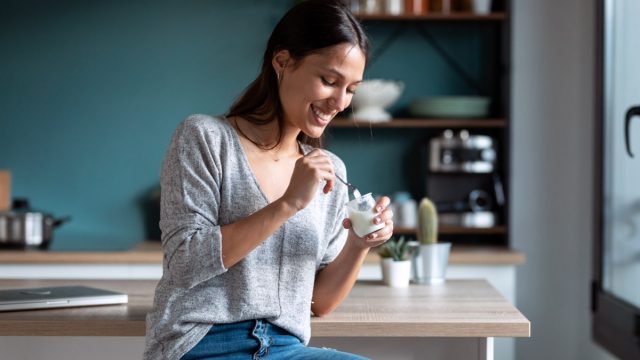
Taylor Grasso, RD (@simplyhealthyrd) is a dietician with a mission: To teach women about balanced nutrition. She has amassed a large following on TikTok by sharing health and nutrition videos, sharing everything from meal plans to tips on how to eat healthier. In one viral video she shared her favorite healthy snacks to help build muscle, burn fat, and lose weight. "I'm a registered dietician who eats fully, intuitively, and I always get asked what I eat in a day. So I thought that I would share all of the snacks that we keep in our house throughout the week," she says in the video. "So some of these I eat on a daily basis. Some of them my husband eats on a daily basis, and some of them, both of us eat every single day."
Greek Yogurt
@simplyhealthyrd Snacks I eat daily as a dietitian, proritizng protein and fiber always #snacks #healthysnacks #healthysnack #healthysnackideas #healthysnackinspo #dietitian #dietitiansoftiktok #nutritiontips ♬ original sound – Taylor Grasso, RD
"When I'm picking and choosing what I want to have for a snack, two of the things that I always try to make sure that I have are protein and fiber, because those are what is going to help balance my blood sugar more throughout the day," says Taylor. "So Greek yogurt is one of my go-tos." She prefers the pre-portioned options, either Two Good or Siggis. "I will eat literally whatever flavor it is. This provides me with the protein. It has 12 grams of protein per serving," she says. "And then I typically add in either mixed berries or just fresh berries depending on what I have to add in a little bit of fiber."
Related: Woman Lost 44 Pounds with These Simple Habits You Can Do Today
Cheese, Fruit, and Nut Packs
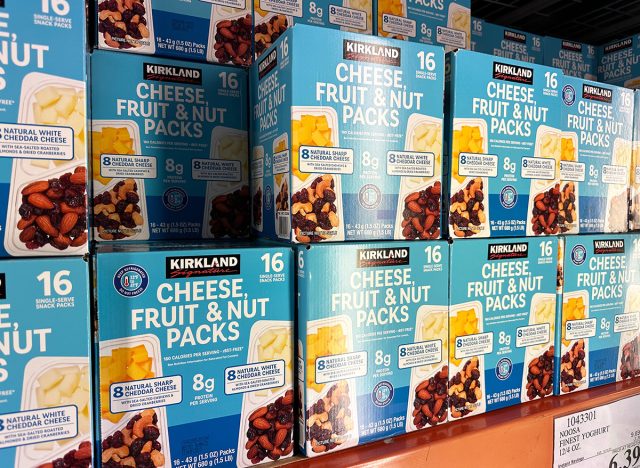
She also swears by Costco cheese, fruit and nut packs, which they also sell at regular stores. "They usually have some form of cheese or turkey or something like that. And then this one also has nuts and dried fruit in it as well," she says. "This has 10 grams of protein per serving and only three grams of fiber, so a little bit lower on the fiber side, but that's okay because we don't have to be perfect at all of our snacks."
Cottage Cheese
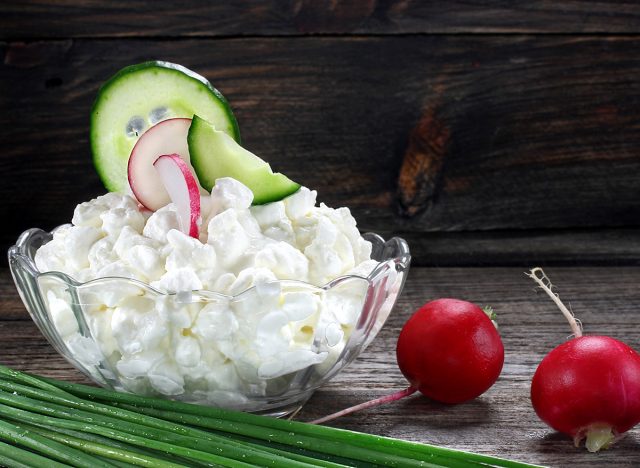
"Another high protein option that is absolutely having a moment right now is cottage cheese," says Taylor. "You can add literally whatever you want to this, but it's going to provide you with 15 grams of protein per serving. Adding something like fruit or veggies is going to improve that fiber content so that we have that balance of both protein and fiber at that snack."
Protein Bars
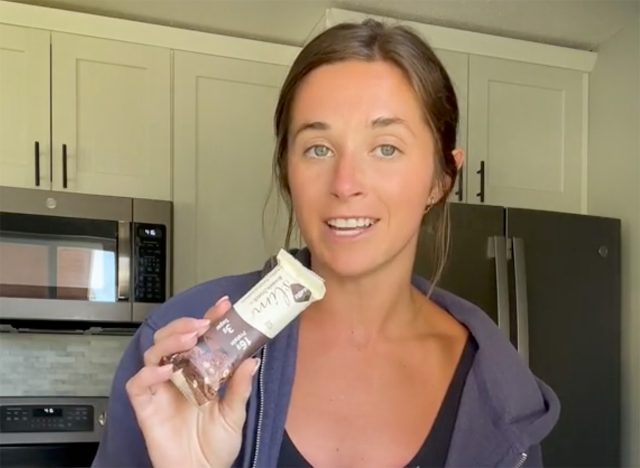
"Protein bars are a really easy one for on the go," says Taylor, revealing that her husband likes the Built bards while she prefers Go Slims. "I always try to look for something around the 200 calorie mark that has 15 grams plus of protein and also has five grams of fiber. So this one has six grams of fiber."
Related: 10 Exercises That Maximize Ozempic Results, Says Celebrity Trainer
Meat Sticks
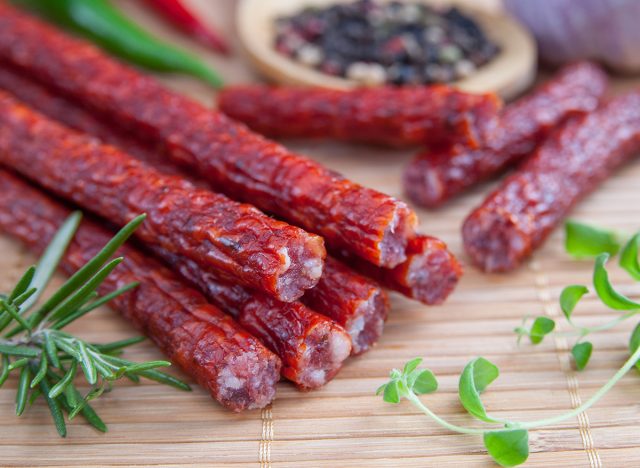
"We absolutely love meat sticks," she adds. "You can either do chicken, Turkey or beef. We love the new Primal brand." She loves buffalo chicken, turkey cilantro lime, and grass fed beef. "These provide you with a good amount of protein, pair them with a whole grain cracker or veggies and hummus to add in a little bit of fiber."
Dried Mango and Pistachio
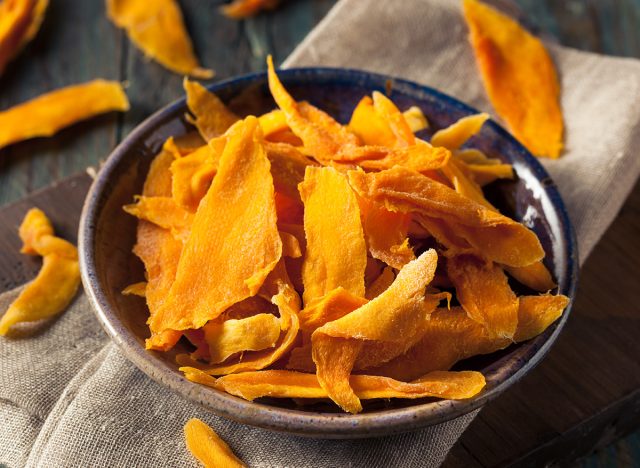
She also loves a combo of dried mango and pistachios. "So the pistachios are going to provide you with a good amount of healthy fats, and then they also are a complete protein," while the dried mangoes "are going to provide you with some carbohydrates and some fiber," she adds. "I would also add something like deli meat, turkey or cheese stick or something like that to boost up the protein content even more."
Protein Is Important for Weight Loss and Blasting Fat
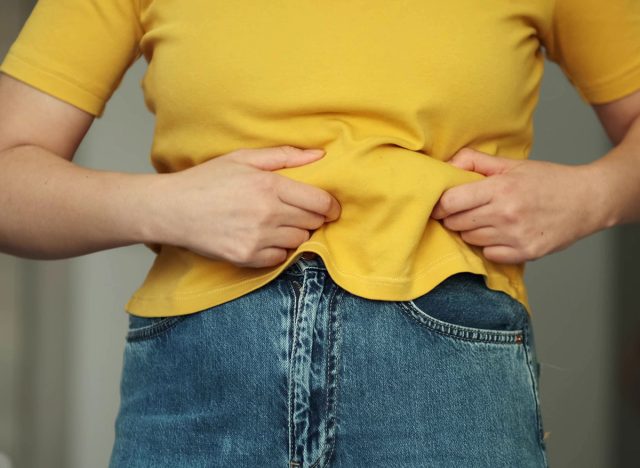
According to clinical trials, consuming more protein than the recommended dietary allowance not only reduces body weight (BW), but also enhances body composition by decreasing fat mass while preserving fat-free mass (FFM) in both low-calorie and standard-calorie diets.
"For most individuals who are trying to lean out, we want to make sure that your protein intake is high, because that will help with hunger and fullness," Chris McMahon, a nutrition and fitness coach, tells The Body Network. "It'll also help with preserving the muscle mass you have. And if you are lifting weights and you are training, it'll help you build muscle and recover. So we want to make sure that's higher."
Related: 3 Easy Steps That Will Help Anyone Lose Weight and Look Great
And, So Is Fiber
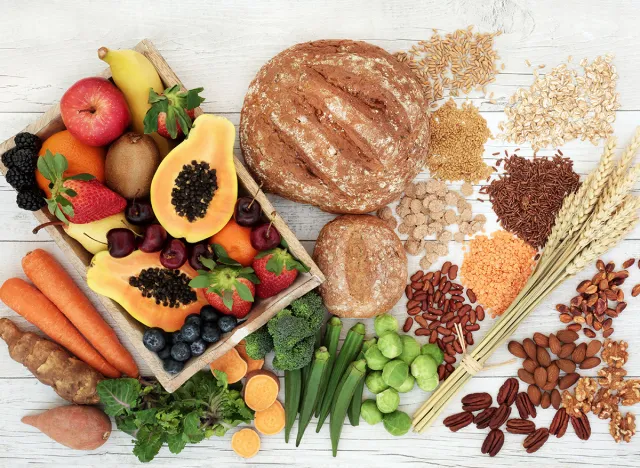
And, he agrees that you should, "make sure you're getting plenty of fiber," as it is "connected to hunger and fullness."
💪🔥Body Booster: Pairing fiber and protein is great for a snack, as fiber will fill you up right away, while the protein will help you stay full for longer.




